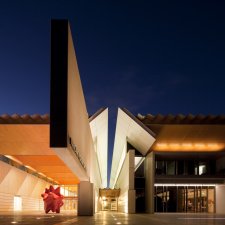- About us
- Support the Gallery
- Venue hire
- Publications
- Research library
- Organisation chart
- Employment
- Contact us
- Make a booking
- Onsite programs
- Online programs
- School visit information
- Learning resources
- Little Darlings
- Professional learning
Bungaree (c. 1775–1830), voyager, navigator and diplomat, was among the most significant Sydney-area Indigenous leaders of the early colonial period. He arrived in Sydney from Broken Bay in the 1790s, soon becoming an intermediary between the Aboriginal community and the colonists. He made his first foray as a seafarer when he joined the Reliance for a journey to Norfolk Island in 1798. In 1799, he travelled as far north as Bribie Island and Hervey Bay with Matthew Flinders, and in 1802 he sailed with Flinders again as a member of the Investigator expedition, proving himself indispensable as a negotiator and for his knowledge of Aboriginal protocols. As a result of his participation in the Investigator expedition, Bungaree reputedly became the first Aboriginal person to circumnavigate Australia. In 1817 he joined the surveying voyage along the southern coast of the continent led by Philip Parker King, who considered Bungaree 'sharp, intelligent', and 'of much service to us in our intercourse with the natives.' Governor Macquarie also valued Bungaree's skills as an intermediary and hoped that he would act as an example to his compatriots. To this end, Macquarie set aside land for Bungaree and his people at Middle Head, issuing them with farming equipment, clothing and a fishing boat to encourage the adoption of 'civilised' ways. Bungaree became well known for his wit and his practice of welcoming to his country ships entering Sydney Harbour. This, combined with the recognition of his standing in both communities, made him a favoured subject for portraitists and several early colonial artists created images of him. Augustus Earle's c. 1826 painting of Bungaree is among Australia's earliest portraits in oil on canvas, and Earle's lithograph of the painting is regarded as the first printed portrait produced in New South Wales. Bungaree died in Sydney in November 1830 after a long illness.
Collection: National Portrait Gallery
Purchased 2018



On one level The Companion talks about the most famous and frontline Australians, but on another it tells us about ourselves.



Visit us, learn with us, support us or work with us! Here’s a range of information about planning your visit, our history and more!



We depend on your support to keep creating our programs, exhibitions, publications and building the amazing portrait collection!